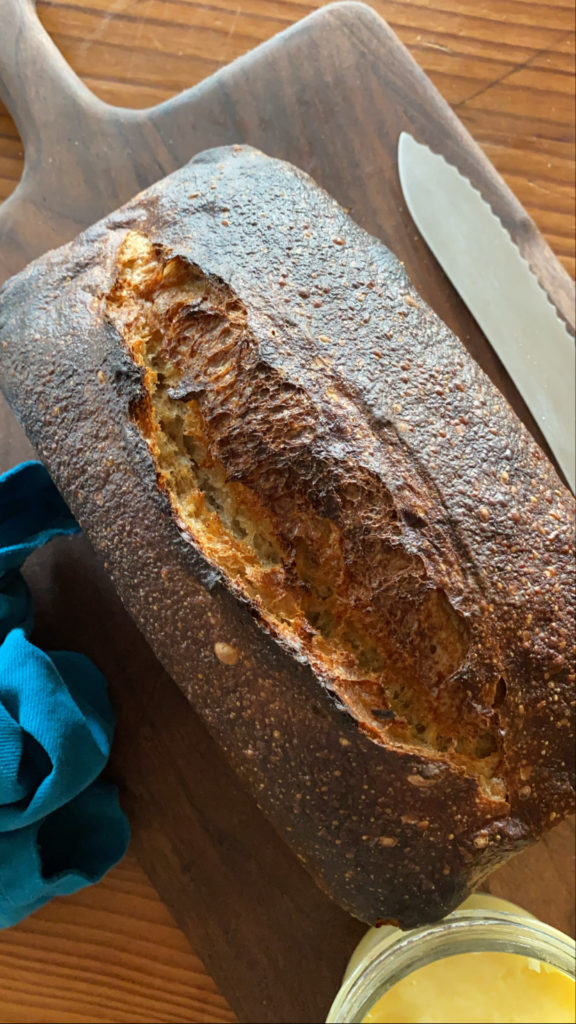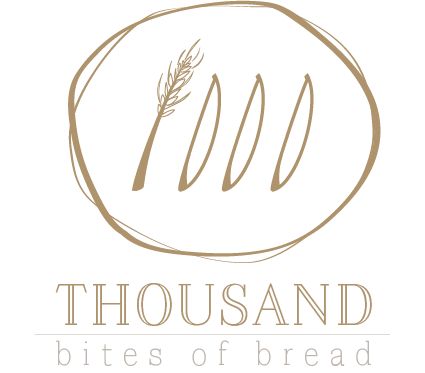
Hello Friends,
I’m writing this just as the clouds part and a rare bit of sun comes pouring out all over the Portland winter. This may be my only hint that Spring is somewhere out there, perhaps right around the corner.
If you’ll excuse me, I’m going to step out and take a walk while my bread is resting happily on the counter. I hope you’re taking mindful time to do the small things that bring you quotidian joy, as well.
Here’s what’s on the menu this month:
Mama Bread
This month’s Mama bread is made with Hollis wheat from Moon Family Farms in Washington. Garrett and Jessica steward their fifth generation family farm with a lot of care. They have a thoughtful approach to managing the land, building the soil in their dry environment, and also keeping the price of their wheat affordable. They dry farm, and save the seeds for the Hollis wheat year after year. To these loaves, I’m adding a bit of Sonora white wheat from farmer Sally Fox in California.
Buttermilk Triticale Loaves
One of my favorite weekly rituals is getting milk and cream from a local farm. I churn the cream into butter (this sounds much fancier than it actually is since I use the Cuisinart to basically zap it), which leaves me with a batch of true buttermilk. The next day, I’ve been taking to the habit of making bread with this delightful ingredient. I love the pairing of buttermilk and rye, but I just got a little triticale, so I’m going to try that instead. If you don’t know what triticale is, I’ve often heard it referred to as a cross between rye and wheat. In these loaves, I use a backbone of white wheat grown by Bluebird Grain Farms and add a bit of triticale from Moon Family Farms in Washington.
Sandwich Loaves
The sandwich bread this month is inspired by my favorite yearly trek to the Asheville Bread Festival. Since I teach students from all over, I like to keep up with local grain sheds in areas around the country. I love the work that Carolina Ground does in Asheville, NC, so I ordered their Bread 75 flour, which is a sifted Catawba red wheat that makes lovely sandwich loaves. To these loaves, I’m adding a bit of malted barley flour from them, too. The barley adds a hint of cereal sweetness and boosts the browning capabilities.
100% Einkorn Loaf
Einkorn is the most ancient wheat that we still cultivate. It’s genetically different than modern wheat because it reflects the time when wheat had a simpler DNA profile. It has a buttery color and a savory flavor with mineral overtones. I’m using grains from Bluebird and milling them at home on my Komo. This bread is a pan loaf and it’s superb as toast dripping with butter and a shaving of parmesan cheese.
I am happy to share any of my formulas with you if you reach out. I hope whatever you are baking is inspiring your day!
With delight and gratitude,

Other news from the world of grain:
-Understanding the history of wheat and how it relates to current science can be confusing. Here is an article that explains how scientists have cracked more of wheat’s genome (pardon the pun), and it also gives a clear account of how to understand it all in layman’s terms. I found it quite useful and if you want to nerd out on this stuff
-Have you seen Michael Kealty’s work about how to taste bread? If not, check it out here. I really enjoy how he outlines the ways we taste the flavor and aroma components of bread.
-A friend and fellow baker Emily Squadra of Wildflower Baking is offering a whole grain croissant class through Airbnb Experiences. I’m taking the class soon, and you should, too! It’s an insanely good price, so don’t miss it. Sign up here.
For information about taking my class through AirBnB, go here.
